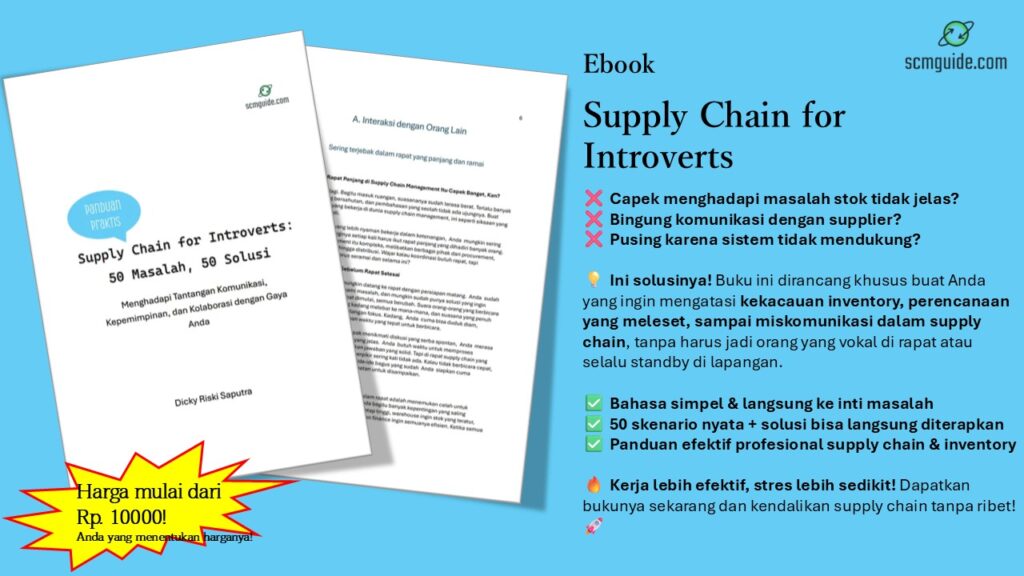People who use imported raw materials tend to have more stock on hand. This is very common, since you have to plan for the possibility that your suppliers won’t be able to keep up with your orders because it takes a long time from when you open a Purchase Order to when the material arrives in your warehouse.
Find local suppliers in your area. This is one of the best ways to cut down on high levels of safety stock and long lead times from imported materials.
How is that?
In this post, we’ll talk more about it. But before we do that, make sure you’ve also joined the scmguide telegram channel so you don’t miss the latest blog posts and can learn more about supply chain management.
Table of Contents
4 Pros of using local suppliers
What’s interesting is that not every company can benefit from buying materials from local suppliers. Their number of items in stock stays high, and their lead time stays long.
What’s the matter?
We’ll talk about that later. But it’s clear that buying materials from local suppliers has a lot of benefits.
Short lead time for getting things moved
With a shorter distance, the time you need to plan ahead makes sense. And this is the clearest benefit of getting materials from local suppliers.
You might also like:
- 6 Steps to Start Managing Your 3PL Performance Effectively
- How to Make KPIs that Work Both Ways to Beat the Competition
Cut back on safety stock
Safety stock is there in case there is a problem with the supplier and they can’t keep up with the supply. And if you import the material, you need a bigger safety stock because if something goes wrong, it will take longer to fix than if you used local materials.

In the same way, if you use materials from local suppliers, you won’t need as much safety stock because you’ll be able to fix problems faster if there’s a problem with your supply. At the very least, you’ll be able to talk to your local suppliers faster and there won’t be any big language or cultural barriers to get in the way.
Reduce inventory risk
When you use imported materials, you have to keep more on hand in case there are problems getting them. And, of course, the more inventory you have, the more risks you face with it, like it going bad, expiring, or something else.
You can reduce this risk and spend more time on your main business if you buy materials from local suppliers. In reality, the risk is just moved from you to your local supplier. But since it is what they core business is, no one is hurt in this case.
Price is lower
In many cases, it will be cheaper to use local materials than to bring in materials from your overseas suppliers. Mostly because of the lower transportation costs of getting to your place.
This has also led a lot of companies to start buying from suppliers close to where they are.
You might also like:
- Your Warehouse is Full, do You Need to Make It Bigger, or Can You Do Something Else?
- Excess Stock, is It Due to Declining Sales or Over Supply? Don’t Get the Wrong Conclusion
Mistakes when buying from local suppliers
Even though I’ve talked about some of the benefits of buying local materials, if your purchase lead time is still long or your stock level is still high, then your strategy is wrong.
If you don’t get any of the above benefits, there’s no reason to buy materials from local suppliers.
To figure out what went wrong, you will have to look at your operations and strategy again.

For example, does your local supplier deliver on time and have a high quality ratio? This means you need to get to know your supplier better. Or, your MOQ is too high, so you need to renegotiate it. Or, you can ask your local supplier for a supply security guarantee so that you can keep less of a safety stock.
Conclusion
There are many benefits to getting materials from local suppliers. I’ve already talked about some of them.
Make sure you get these benefits. Because if you don’t, using local materials is pointless. This comes with a lower MOQ. Because one benefit of using local materials is that you can ask your suppliers to send materials in smaller amounts but more often.
Hope it helps!
If you think this article is helpful, please share it with your other coworkers so that they can also learn from it. You can also join the scmguide telegram channel to keep up with the latest blog posts and learn more about supply chain management. You can use any of the articles on this blog for any reason, including making money, without having to give credit.

 by
by 


